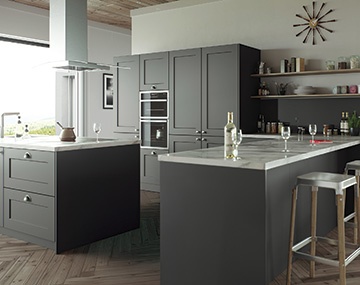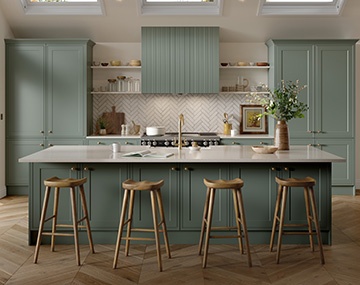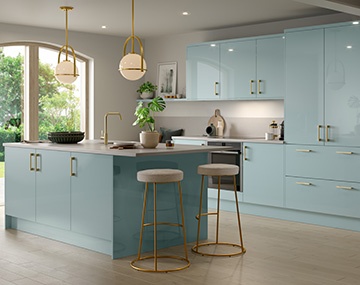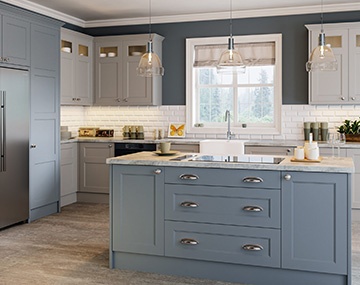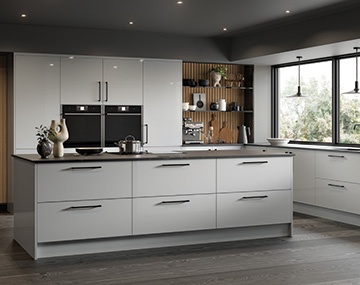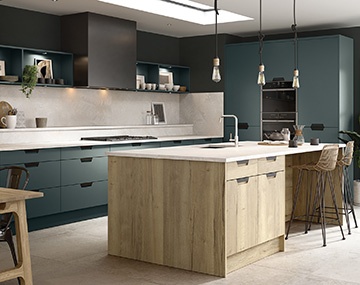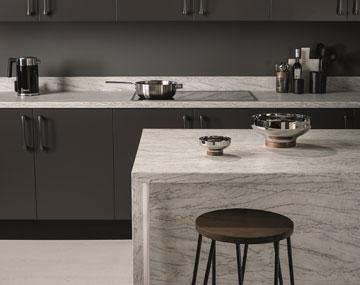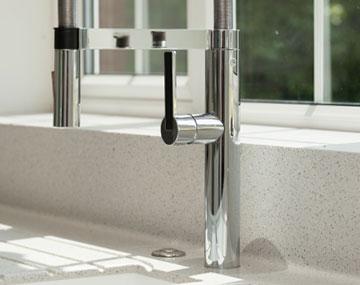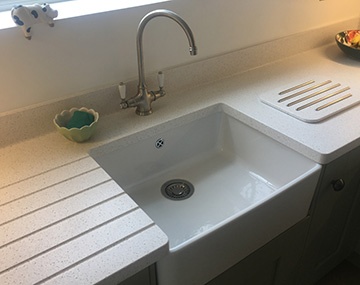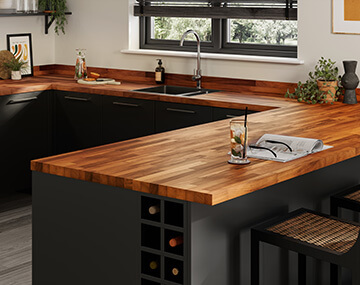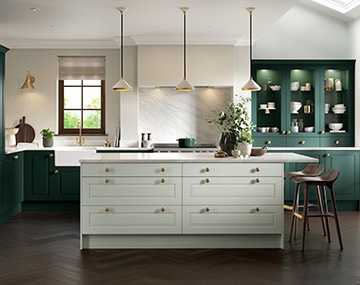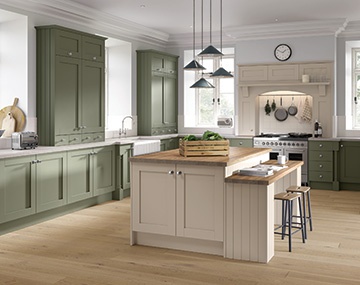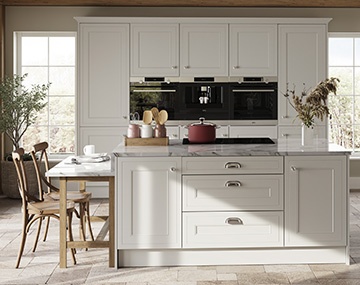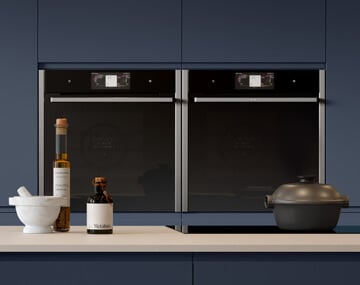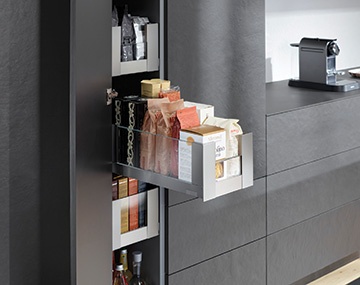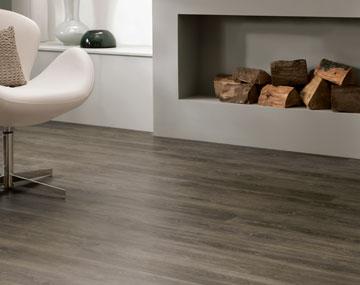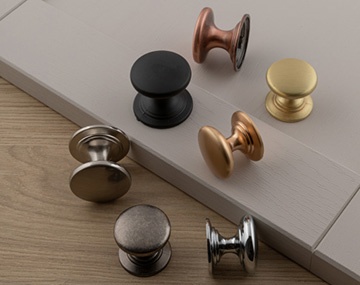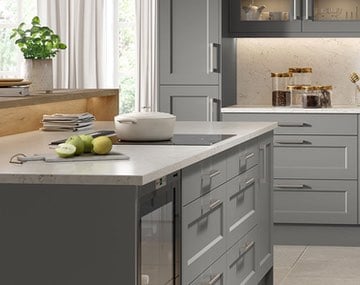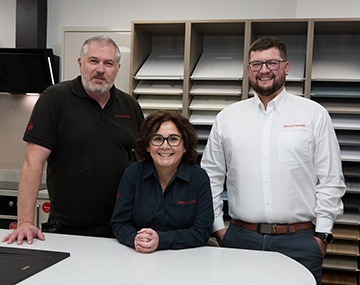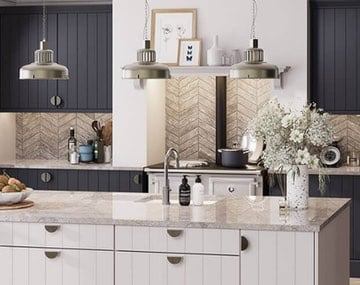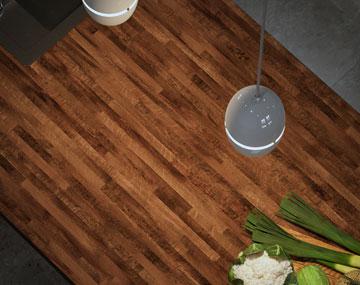- Home
- Kitchen Doors
- Worktops & Sinks
- Fitted Kitchens
- Accessories
- Kitchen Inspiration
- Why Dream Doors?
19 January 2022
Wood vs Laminate Worktops: Fit Your Worktop To Your Lifestyle
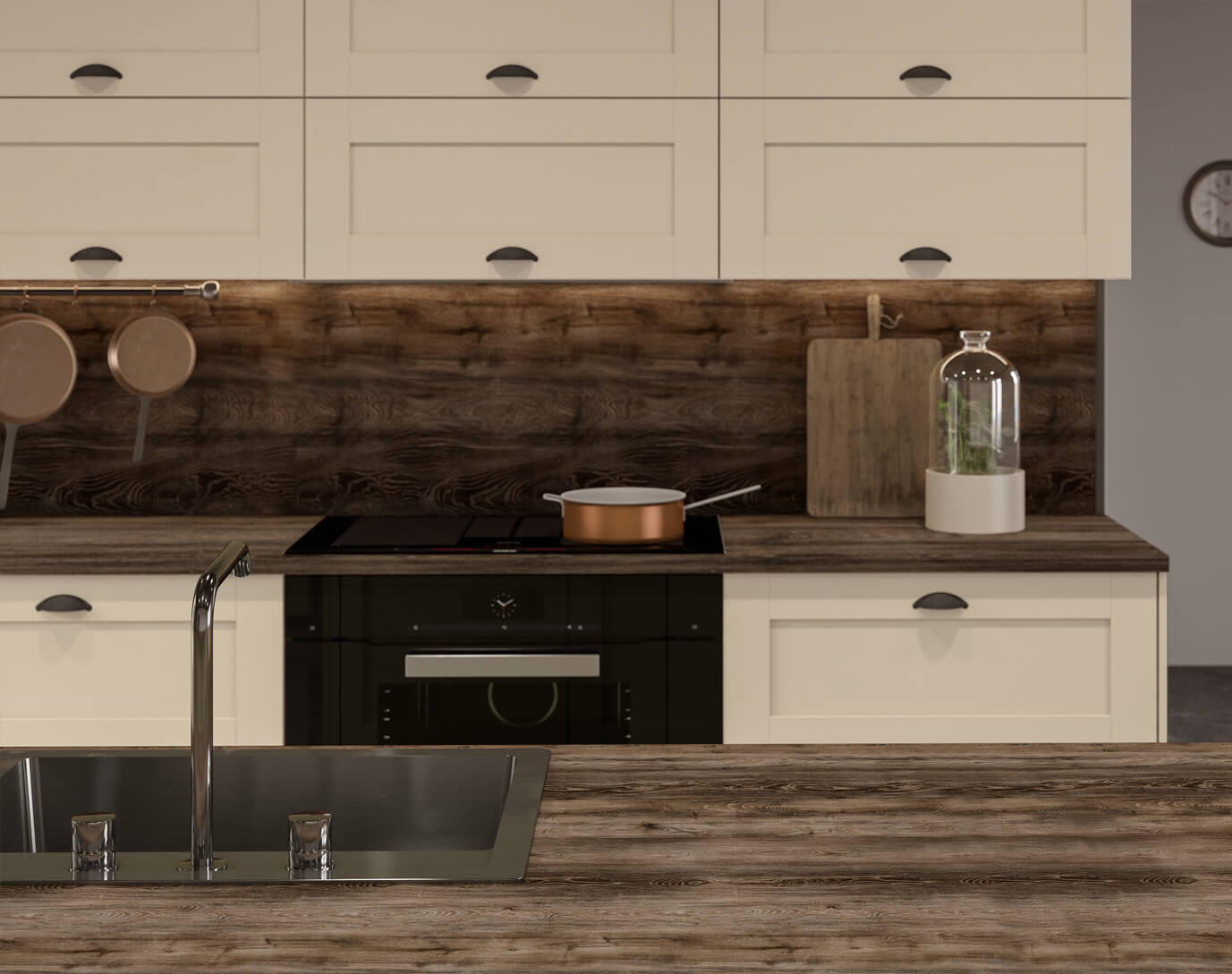
Picking between wooden kitchen worktops and laminate kitchen worktops can be a difficult choice. Wood Vs. Laminate is one of the eternal kitchen debates, after all.
The question is: which one is right for you?
Let’s break it down.
Solid Wooden Worktops

Wooden Worktops are capable of providing a warm and homely feel to any kitchen. Different species of wood give you different hues – including light and dark options. This makes wood quite versatile in allowing them to match the kitchen vibe that you’re looking for.
Though wood tends to evoke a more rustic and warmer atmosphere, with the light wood options, you can lean in to a more modern or contemporary kitchen design aesthetic.
Wood worktops can come as one solid piece – or interconnected strips known as butcher blocks.
Wooden Worktop Pros
One of the more interesting properties of wooden worktops is that they get better with age. As time passes, the natural colour of the wood deepens and the patina of the wood starts to become more pronounced. This brings out the ‘character’ of the kitchen over the years.
Wooden worktops are very durable – they've been used in restaurants and in hard-working butcher's shops for years. With treatment, wooden worktops are able to easily resist scratches and knife-work. In fact, with a wooden worktop, you can prepare food directly on the surface.
Beyond their durability wooden worktops are highly maintainable. Imperfections such as dents and scratches can be filled in or sanded out. And with regular retreatment it’s possible to prevent issues such as these from occurring in the first place.
Drawbacks of Wooden Worktops
Wooden worktops are considered to be midrange when it comes to cost. Ranking above alternatives like laminate, but below options like granite or marble. Solid wood tends to be more expensive than butcher’s blocks. So, if cost is a consideration for you, then this is definitely something to keep in mind when making a decision between wood and laminate.
Although it’s fairly easy to correct imperfections in wooden countertops- they can be prone to discolorations and scorch marks from hot pans.
While wooden worktops are very durable, they do require regular retreatment. To properly maintain a wooden worktop, it will need to be oiled every 6 to 8 weeks, and retreated around once a year. This will make sure that it retains peak resistance and prevent it from soaking up water.
Compared to Laminate, wooden worktops are a little bit more complex to install. Wood tends to be heavier and can expand or contract with its environment. For this reason, they usually need to be installed with slotted brackets that secure the worktop pieces to the cabinets and prevent splitting.
Pros and Cons
|
Pro |
Con |
|
Durable material that will last for years and years |
More expensive than some alternatives with higher up-front costs |
|
Gets better with age as wood matures and patina becomes more visible |
Requires regular oiling – every 6 to 8 weeks. |
|
Easy to maintain over the years by sanding and retreating |
Can get discolorations and scorch marks |
|
Gives the kitchen a warm homely feel or a rustic look |
More complicated to install than some alternatives |
|
Available in a range of hues, light and dark wooden options to fit kitchen design |
|
|
Wooden countertops can add to the value of the home |
Laminate Worktops

Laminate is a very versatile option for a kitchen worktop. Due to the way Laminate worktops are made, they can carry any style of material finish. This option gives the ultimate flexibility to match your design. Often, Laminate worktops will mimic the look of other popular materials such as wood, granite, marble or quartz.
Laminate Worktop Pros
Laminate Worktops are created by forming a thin layer of ‘dressing wood’ over a pressboard, or a medium to high-density fiberboard (MDF) underwood. This material can be heavily stained, varnished or come with scratch-resistant polymer coating.
While some people may think that this is a ‘cheap imitation’ of a ‘real material’ counterpart, a Well-planned and fabricated laminate worktop that has crisp, square edges and high-definition printing can provide a stunning look.
This allows for an affordable luxury finish that can be indistinguishable to the untrained eye.
One of the biggest advantages of laminate is the price point. Not only is it one of the more affordable kitchen materials it is cheaper to install. Pieces of laminate are lighter and more flexible than their hardwood counterparts. This makes it easier to wrap them around corners, tight bends or awkward spaces.
Laminate worktop Drawbacks
While well-made Laminate worktops are affordable, look great and are cheaper to install, it is considered to be one of the lower-durability options for your kitchen. Laminate comes with a strong polymer coating which offers extra protection – but this is a necessary mitigation against damage.
Laminate can be chipped, deeply scratched and sometimes singed by hot saucepans. Unlike wooden worktops, it is more difficult to remove imperfections in laminate. The top layer of finish is quite thin, so any attempt to sand it down and redress would expose the bare MDF.
Laminate worktops, in general, need to be replaced every 10 to 12 years.
|
Pro |
Con |
|
Highly versatile |
Less durable |
|
Lower cost option |
Harder to maintain due to thin top layer |
|
Easier to install and fit |
Needs to be replaced more often than alternatives (10-12 years) |
|
Can mimic premium materials |
Conclusion
Laminate and Wood are both great options for any new kitchen or kitchen re-design –
Laminate is highly versatile and can convincingly mimic premium materials such as wood and stone. Laminate is a more affordable material and offers lower up-front costs for installation. It is lighter and easier to fit, however – it is less durable, harder to maintain and will need to be replaced at the end of its life.
Wood is a more expensive material, more costly to install, and requires more ongoing care than laminate. Wood will require regular oiling and retreating. However, it is highly durable and easier to maintain. Imperfections such as cuts and scratches can be sanded out, filled and re-treated. As the years pass it will gain more character as the wood deepens in colour and the natural patina shines through.
Which one you pick will largely depend on your current lifestyle. If you’re looking for a stunning finish and a kitchen worktop that gets the job done which you replace when it reaches the end of its life, then Laminate would be a great choice.
If you want something that will bring warmth to your kitchen. Something that you can nurture over the years, that will develop its character and personality while offering long-lasting durability and style, then wood could be a great choice for you.


